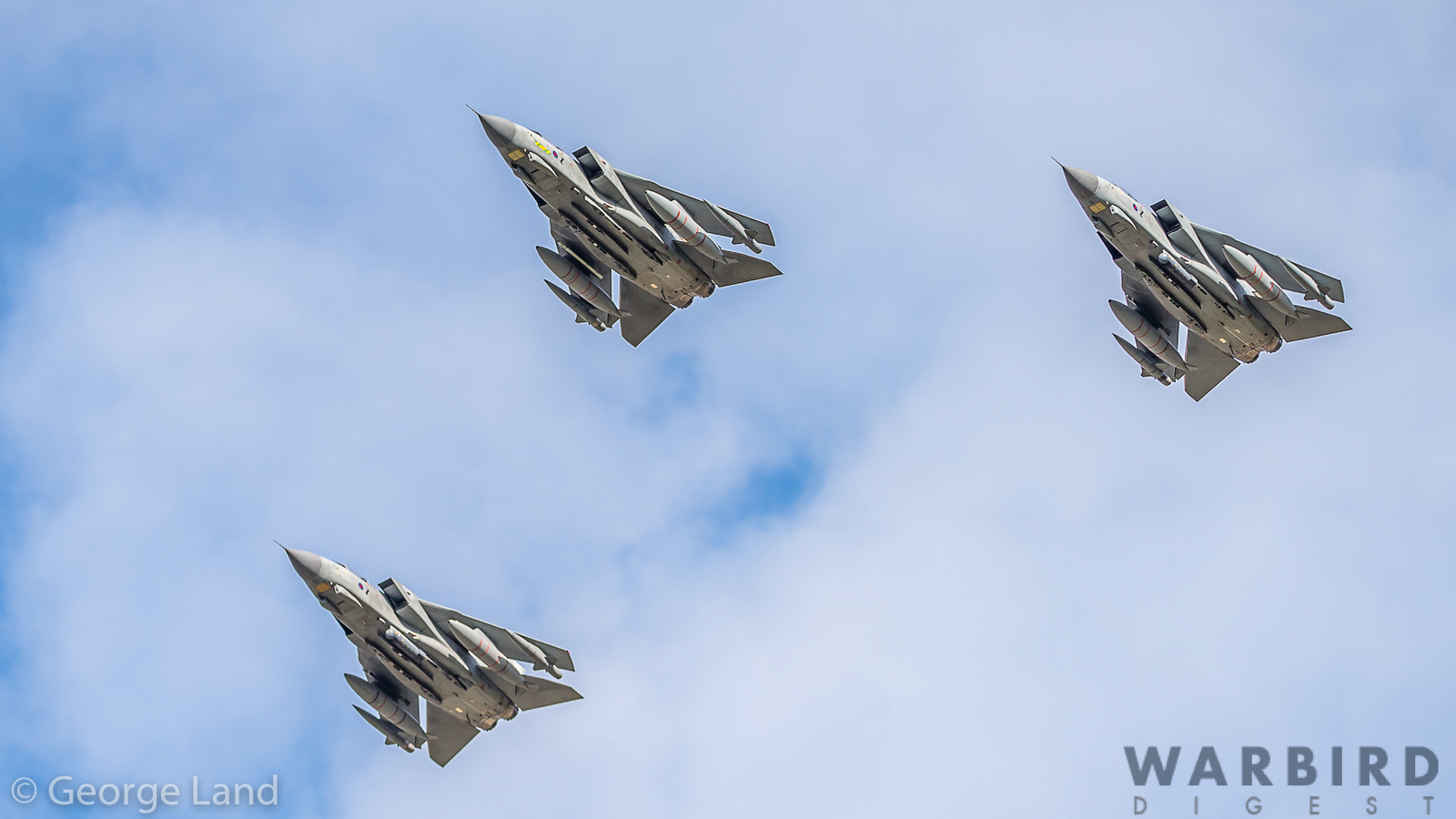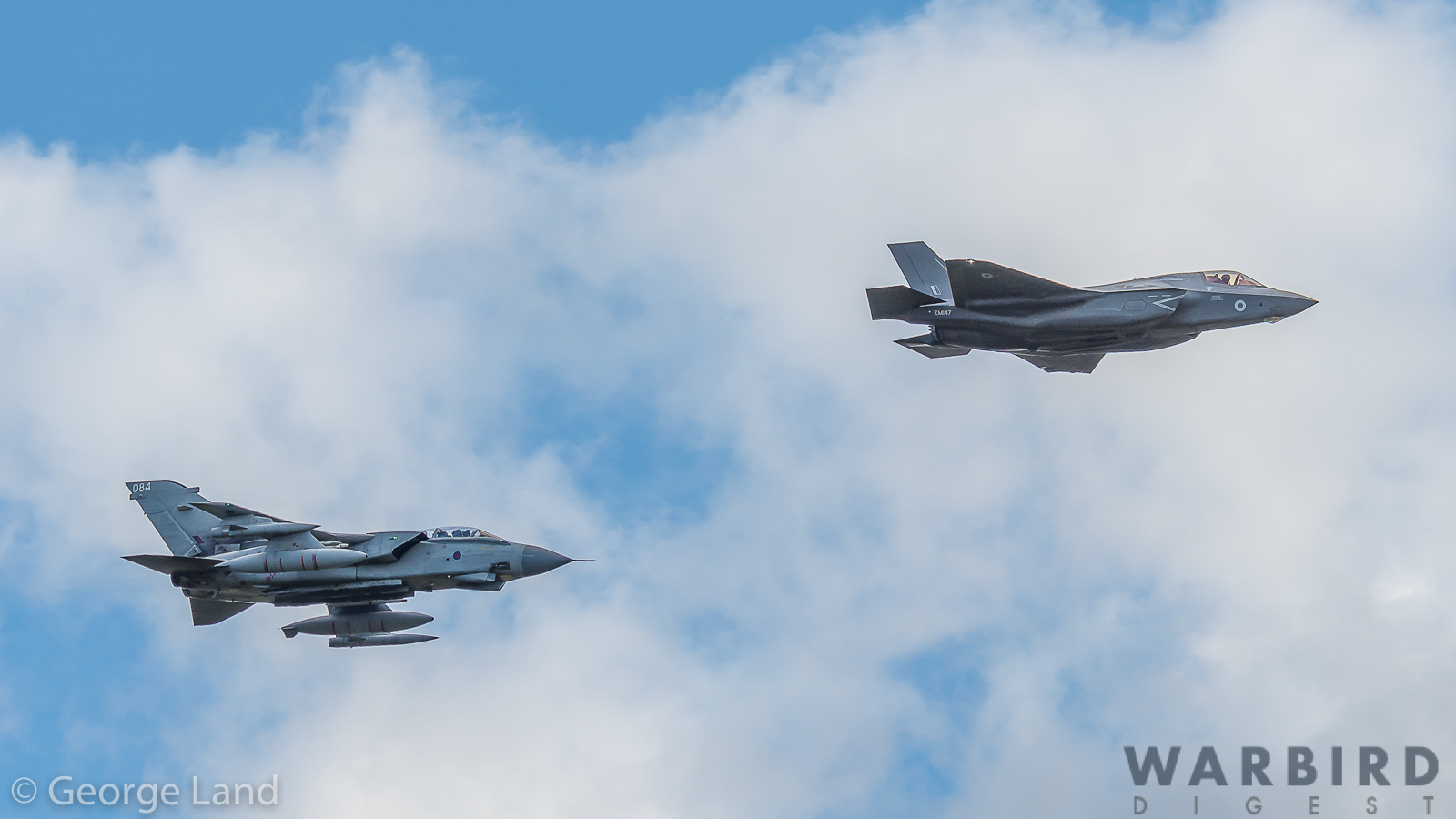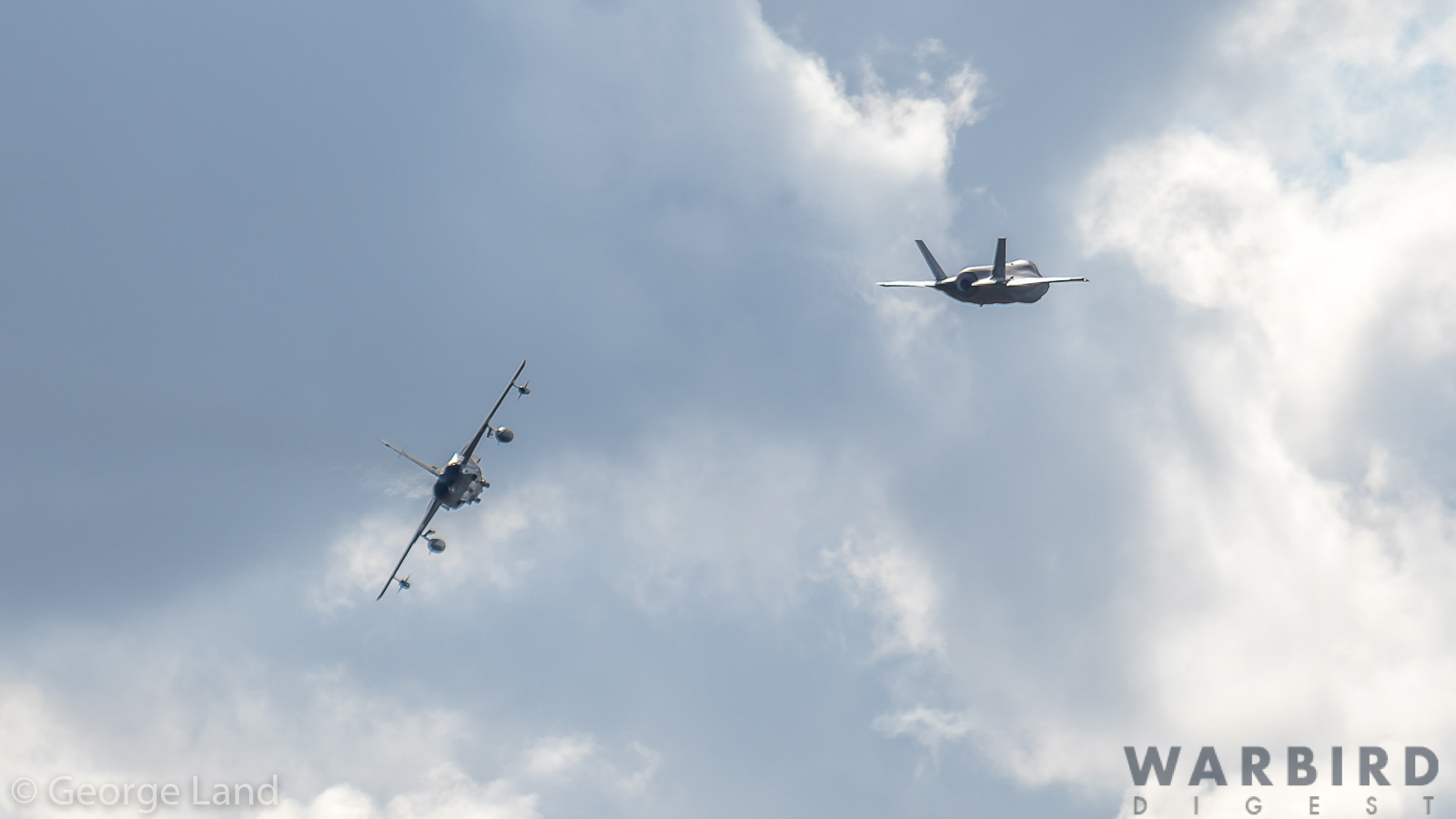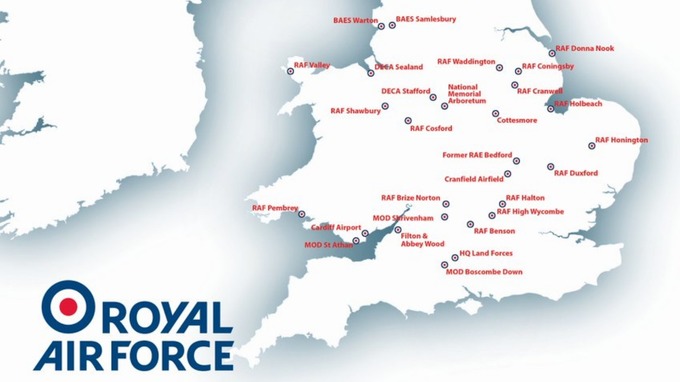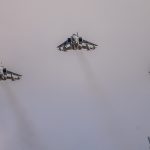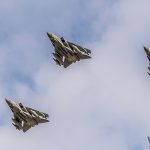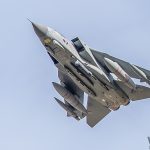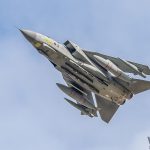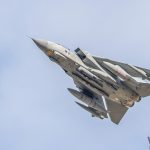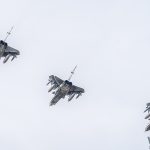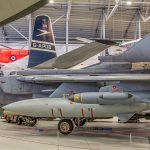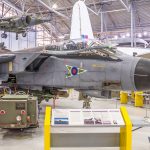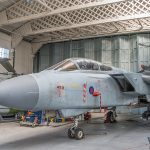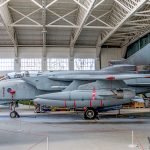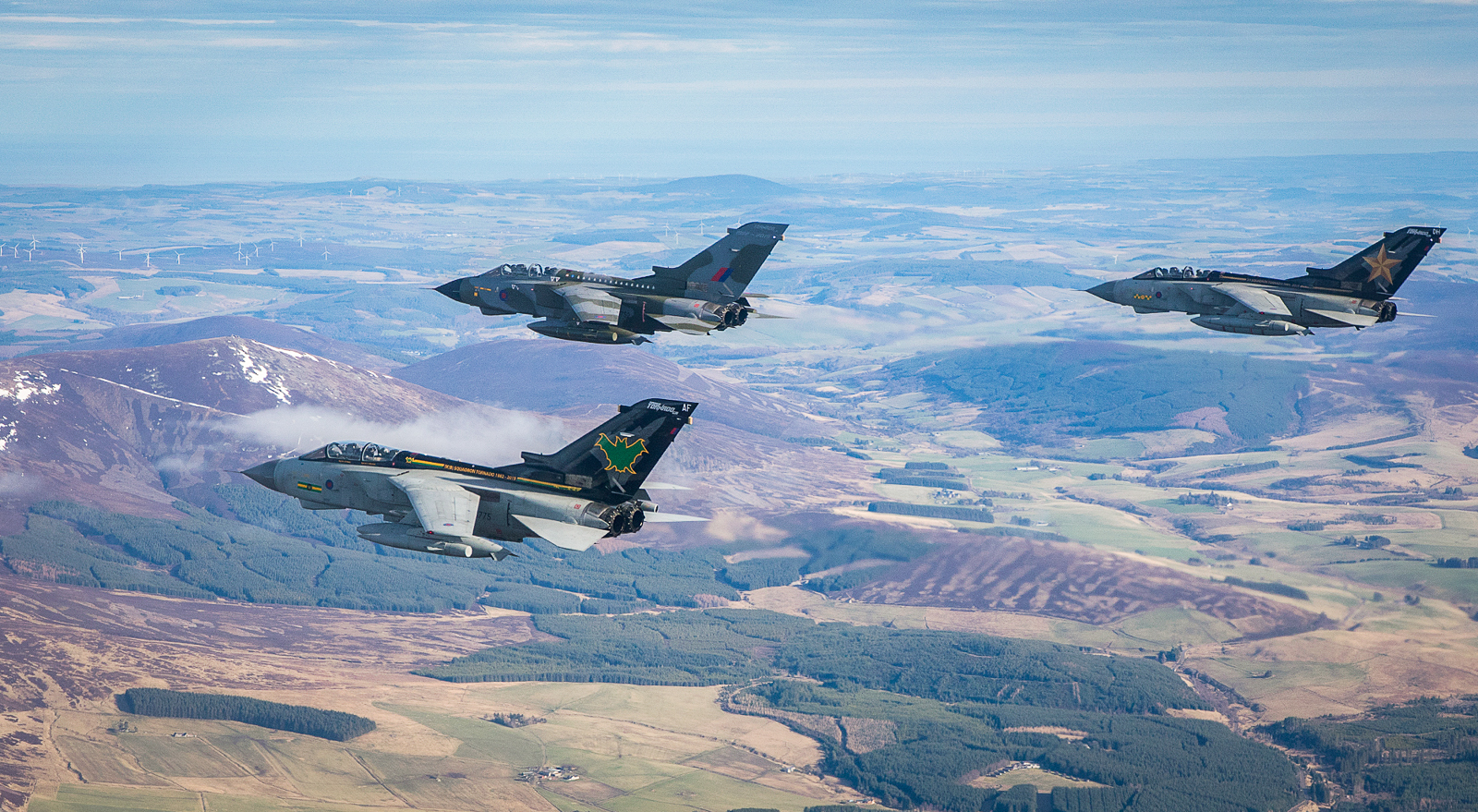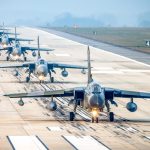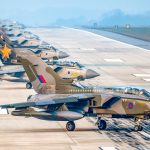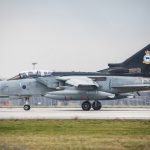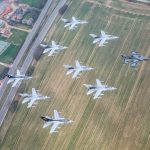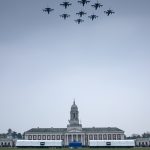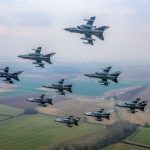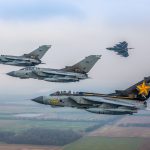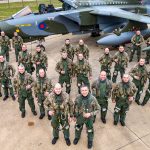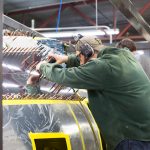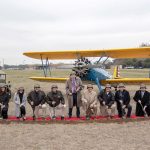Tornado Farewell Tour
based upon words and images by George Land
After forty years of stalwart service, Britain’s Royal Air Force is due to retire the last of their Panavia Tornados at the end of March. Initially known as the Multi-Role Combat Aircraft, or MRCA, the Panavia Tornado was the crowning achievement of a tri-national development team between the United Kingdon, Germany and Italy which began during the late 1960s. The type first flew in 1974 and entered service in 1979. Nearly a thousand Tornados rolled off assembly lines in Britain, Italy and Germany between 1979 and 1998. The Tornado has proved incredibly versatile over the years, flying in numerous conflicts, both as the IDS model (Interdictor/Strike) in ground attack, anti-shipping, and aerial reconnaissance roles, and ADV (Air Defence Variant) as a fighter. It has served the air arms of Italy, Germany, Saudi Arabia and the UK with distinction. While all four nations still field operational examples in significant numbers, Britain’s Royal Air Force is due to retire the remainder of their fleet on March 31st. Sadly this is more due to budgetary reasons than operational, as Tornados had been expected until fairly recently to continue with the RAF until at least 2025.
In fact, RAF Tornados were still dropping weapons in anger as late as January 26th, 2019, when a flight from RAF Akrotiri in Cyprus attacked enemy positions in Syria. This was part of Operation Shader, the British contribution to the effort to defeat ISIS in Syria and Iraq. The flight of eight Tornados returned from this final operational deployment to RAF Marham in Lincolnshire, England on February 5th. Tornados have slowly been replaced by the BAE Systems Typhoon, and now also by the nine, only-just-0perational Lockheed F-35B Lightning IIs of RAF 617 Squadron, the famous ‘Dambusters’, (although half of the flight crew and staff are members of the Royal Navy in the newly re-constituted unit).
Affectionately known as the “Tonka” within the RAF, the service organized a series of three flypasts to mark the aircraft’s retirement which took place on February 19th, 20th and 21st. These missions took a Tornado three-ship formation over significant sites in Britain associated with the aircraft in some way, but primarily locations where they were designed, manufactured, tested, maintained or flown. The Tornado has an enthusiastic following with the British public, and thousands of spectators turned out to witness these events.
The first leg was on Tuesday, February 19th and covered the Midlands region of the UK with 18 sites visited before returning to RAF Marham, the Tornado’s sole remaining operational base.
Sites Overflown during the first leg of the tour on February 19th:
• Cottesmore (former RAF Station and home to the Tri-national Tornado Training Establishment)
• National Memorial Arboretum
• DECA Stafford
• RAF Cosford – (RAF technical training establishment & home to RAF Museum Cosford)
• RAF Shawbury
• DECA Sealand
• RAF Valley – (RAF flying training)
• BAE Systems Warton – (Tornado Assembly Factory)
• BAE Systems Samlesbury – (Tornado Component Factory)
• RAF Spadeadam
• RAF Leeming – (former Tornado ADV base)
• RAF Topcliffe
• RAF Linton-on-Ouse – (RAF flying training)
• RAF Waddington – (Primary RAF airborne electronic surveillance airfield)
• RAF Cranwell – (RAF training college)
• RAF Coningsby – (former home to Tornado ADV Operational Conversion Unit)
• RAF Donna Nook – (RAF bombing range)
• RAF Holbeach – (RAF air weapons range)
The Tornado farewell tour’s second leg of the took place on Wednesday, February 20th with flypasts scheduled over a further 16 sites, the second of which was over Imperial War Museum Duxford in Cambridgeshire. As our readers well know, this airfield is steeped in aviation lore with strong connections to both the RAF and USAAF.
The RAF had painted up three Tornados with special celebratory tail markings for the flypasts, but unfortunately due to servicing issues only one of these was available for the Duxford leg of the second flight (Feb 20th), which approached the airfield from the east at 400 feet and 420 knots, performed one pass over the field, then departed all too quickly to the West.
Currently the Museum has two static Tornados on site allowing the 3,000 plus visitors who turned up on the day to not only witness the three-ship flypast, but also to have a closer inspection of GR1A ZA465 in the Aerospace Museum Hall and GR4 ZA469 in Hangar Four.
• RAF Honington – (RAF Tornado’s first operational base)
• IWM Duxford
• Former RAE Bedford – (Royal Aircraft Establishment where much Tornado testing took place)
• Cranfield Airfield – (site of former RAF station and Cranfield University which played a significant role in aviation technology development)
• RAF Halton – (former home of RAF School of Technical Training)
• RAF High Wycombe – (site for HQ Air Command)
• RAF Benson
• HQ Land Forces
• MOD Boscombe Down – (Primary aviation test facility in Britain – home to much Tornado development work)
• RAF Pembrey – (Support airfield for nearby Pembrey Sands Air Weapons Range)
• MOD St. Athan – (major maintenance facility for Tornado fleet)
• Cardiff Airport
• Filton – (former home to Bristol Aeroplane Company and later BAE Systems factory)
• Abbey Wood – (MoD facility)
• MOD Shrivenham – (MoD Defence Academy)
• RAF Brize Norton – (Primary RAF heavy lift airfield)
The final leg of the Tornado tour took place on Thursday 21st February and visited just three sites in Scotland, all of which have strong connections to the aircraft:
• Leuchars Station – (former RAF Leuchars and Tornado ADV base)
• RAF Tain – (Britain’s largest live weapons range)
• RAF Lossiemouth – (former Tornado IDS base)
Following the successful three-ship flights over Britain, RAF Marham was able to muster a special nine-ship flypast on February 28th for the graduation ceremony at RAF College Cranwell. The RAF made the following press release for the event…
THE campaign to celebrate the much loved and soon to retire Tornado aircraft continued on Thursday with a farewell flypast of a nine aircraft over East Anglia.
Following the hugely popular series of FINale flypasts over the UK the previous week, the Tornado force carried out a sortie over Lincolnshire with nine aircraft from its base at RAF Marham in Norfolk. As witnessed the previous week, thousands of onlookers gathered along the route to see the iconic jet for the last time.
The driving force behind the farewell activities, the RAF Marham Station Commander, Group Captain Ian ‘Cab’ Townsend, said:
“The response to last week’s FINale flypasts reflects the high regard with which the aircraft is held by the UK public. With barely a fortnight before the disbandment parade for the two remaining Squadrons this was our opportunity to say thank you to all those who have supported Tornado since she entered service”
The route from the Tornado’s home at RAF Marham took them over College Hall at RAF Cranwell where a graduation parade for new officers had taken place. The Gp Capt added:
“It is sobering to think that most of the officers graduating today would not have been born when Tornado first entered service in 1979. Sad though it is, the time is right for Tornado to retire and hand the baton of UK Combat Air capability to the Typhoon and F35B Lightning, both exceptional aircraft able to meet the challenges of future warfare.”
In the immediate term, the Tornados will be replaced by new weapons capabilities for the Typhoon jet. Under ‘Project Centurion’, worth £425m over the past three years, the Typhoon now has deep strike cruise missile Storm Shadow, air-to-air missile Meteor and the precision attack missile Brimstone at their disposal.
The RAF’s new fleet of F-35 Lightning jets will form the backbone of the UK’s combat air fleet alongside the Typhoon jets in the coming years.
The Tornado will be officially retired from service at the end of March and will only be used for training purposes over the UK in the intervening period.
Nicknamed the “Tonka”, the aircraft’s first use in live operations was during the Gulf War in 1991, when 60 Tornado GR1s were deployed from bases in Saudi Arabia and Bahrain.
The final official public Tornado flight will likely take place on March 14th at RAF Marham for the IX and No.31 Squadron disbandment ceremonies. After this date, the majority of the remaining, serviceable Tornados will likely be flown to RAF Leeming for RTP, or Return To Produce, where all useful spares will be removed, with whatever remains being put up for tender. It seems likely that some of the reclaimed parts will be refurbished for sale to other operators of the type. It is unknown at this time whether any airframes have been earmarked for preservation, though given the Tornado’s huge following in Britain, and its enormous contribution to the nation’s defense, some of them must be saved. The official final in service date for the RAF’s Tornado fleet is March 31st, a sad day for many of us in the aviation world.
We wish to offer our many thanks to George Land for his images, details and words used in this article.







